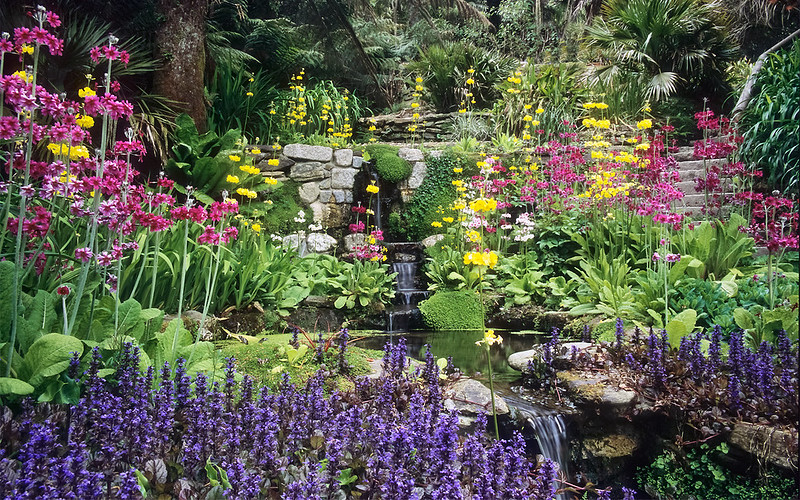Sharawadgi
Sharawadgi applied to modern English landscape garden planning.
The term sharawadgi (or sharawaggi) has Japanese origins despite being used to describe the organisational principles of beauty without order behind landscape design in China. Sharawadgi was first used in English by Sir William Temple, who may have heard it from travelling merchants during his time as England's ambassador in The Hague.
As a statesman and diplomat, Temple was best known as the person who helped to arrange the successful union between Prince William of Orange and Princess Mary of England. Sharawadgi appeared in Temple's essay, 'Upon the Gardens of Epicurus', which was written in 1685 (but not published until 1692). It described the artful avoidance of straight, symmetric lines in gardens, architecture and even urban planning. This intentional irregularity is considered 'organic', creating designs that appear more natural.
Illustration of a sharawdgi garden plan from 1827.
The term came into common use in the 18th century, where it was widely incorporated into aesthetic theory and was one of the drivers of the popular English landscape garden movement.
[edit] Related articles on Designing Buildings Wiki
Featured articles and news
RTPI leader to become new CIOB Chief Executive Officer
Dr Victoria Hills MRTPI, FICE to take over after Caroline Gumble’s departure.
Social and affordable housing, a long term plan for delivery
The “Delivering a Decade of Renewal for Social and Affordable Housing” strategy sets out future path.
A change to adoptive architecture
Effects of global weather warming on architectural detailing, material choice and human interaction.
The proposed publicly owned and backed subsidiary of Homes England, to facilitate new homes.
How big is the problem and what can we do to mitigate the effects?
Overheating guidance and tools for building designers
A number of cool guides to help with the heat.
The UK's Modern Industrial Strategy: A 10 year plan
Previous consultation criticism, current key elements and general support with some persisting reservations.
Building Safety Regulator reforms
New roles, new staff and a new fast track service pave the way for a single construction regulator.
Architectural Technologist CPDs and Communications
CIAT CPD… and how you can do it!
Cooling centres and cool spaces
Managing extreme heat in cities by directing the public to places for heat stress relief and water sources.
Winter gardens: A brief history and warm variations
Extending the season with glass in different forms and terms.
Restoring Great Yarmouth's Winter Gardens
Transforming one of the least sustainable constructions imaginable.
Construction Skills Mission Board launch sector drive
Newly formed government and industry collaboration set strategy for recruiting an additional 100,000 construction workers a year.
New Architects Code comes into effect in September 2025
ARB Architects Code of Conduct and Practice available with ongoing consultation regarding guidance.
Welsh Skills Body (Medr) launches ambitious plan
The new skills body brings together funding and regulation of tertiary education and research for the devolved nation.
Paul Gandy FCIOB announced as next CIOB President
Former Tilbury Douglas CEO takes helm.
UK Infrastructure: A 10 Year Strategy. In brief with reactions
With the National Infrastructure and Service Transformation Authority (NISTA).
























